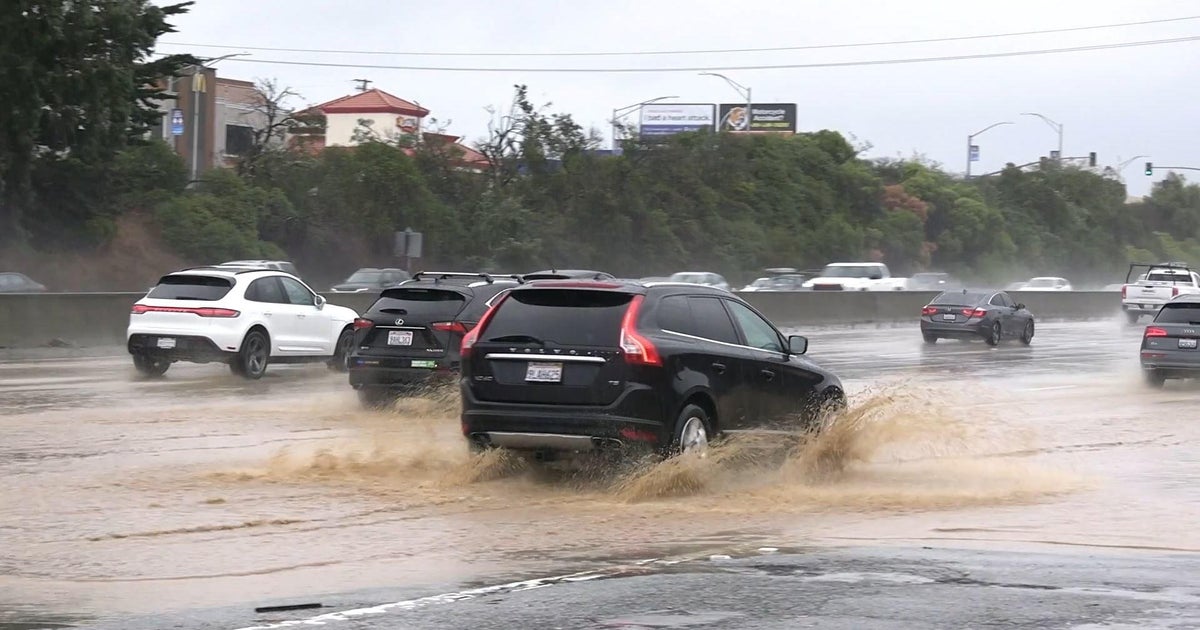Rising sea levels threaten San Francisco waterfront landmarks
SAN FRANCISCO - The San Francisco waterfront is home to some of the most iconic landmarks, historic districts, and stunning views in the world, but the critical gateway and economic backbone to the city is threatened by rising sea levels.
The rising waters put at risk more than 500 businesses that call the port home, including a legendary little shack on the edge of Pier 30.
It's called Red's Java House.
For nearly 70 years, Red's has served much of the same fare, including its famous cheddar cheeseburgers with mustard, mayonnaise and pickles on a San Francisco sour dough roll.
That burger had late chef Anthony Bourdain as well as longtime regular customer Vince Sheffer both gushing with joy.
"I love Red's. I love the burgers. It's a treasure. It's one of the best places in the city," enthused Sheffer, as he stood nearby a photo of Bourdain chowing down on a cheeseburger that hung on a wall at Red's.
On a nice day, it's especially great to head to the back patio to enjoy a beer and fries.
Red's sits at the edge of San Francisco Bay. Because of its proximity to the piers, it was an old-time hangout for sailors and longshoremen.
"People would get off the ships and they would come to Reds to eat. And the importance of it is that we're still here today. We overlook the bay bridge. I mean you can't come by a better scenic view," explained owner Tiffany Pisoni.
Red's is resilient. The eatery has survived a massive pier fire in 1984, the Loma Prieta Quake in 1989, and most recently, the shutdown woes of the COVID-19 pandemic.
But now, a new culprit threatens its very existence: sea level rise.
"Sea rise is an issue for Red's Java House because we are right on the water," said Pisoni.
The science is clear: more water is heading our way. As the earth heats up, ice sheets and glaciers are melting, and the oceans are expanding.
According to the SF Port, by the end of the century, sea levels around San Francisco Bay will rise anywhere from 3 to 7 feet, possibly even higher.
"We're already seeing flooding on the Embarcadero. We know the Bay is rising, we know it will continue to rise," explained SF Port director Elaine Forbes
Forbes told CBS News Bay Area that the port is committed to planning for -- and adapting to -- the anticipated impacts of climate change. It won't be one size fits all: the Port controls 7.5 miles of bay coast, and it's not all the same. But she said SF Port and the Bay Area is up for the challenge.
"It will take a lot of ingenuity and tenacity to move from where we are today to where we need to be. But it's a problem we must solve," noted Forbes.
An urgent matter is the aging seawall that literally holds downtown San Francisco together - and protects both the city and critical infrastructure from flooding.
"Whether it be the BART Train, the Muni, PUC pipes, the electrical - it's all in the grid that hits the end of the urban edge which is our shoreline and our seawall," said Forbes.
Some sections of the seawall are up to 140 years old and it's vulnerable to both seismic and increasing flood risks.
The port has prioritized several projects along the Embarcadero that include efforts to strengthen the wall. These early projects are priorities because they focus on life safety and emergency responses.
Red's and its customers hope their pier will also soon be added to the list. There has been a lot of discussion as to what might happen to the Pier, and there is concern about the restaurant's future.
"They definitely should fix the sea wall, I hope, and keep Red's here forever, " opined Sheffer.
Pisoni said she is grateful for her customers.
"I want to keep going for them. I want to be here. We don't want to leave, and we don't plan on leaving," she added.
While San Francisco history is hung on its walls, Red's doesn't want to become history any time soon.




